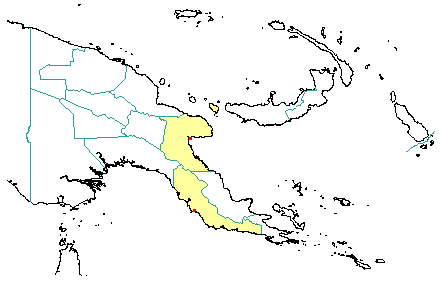
in PNGplants database
PNGTreesKey – Canarium vulgare Leenh. |
Barry Conn (NSW) & Kipiro Damas (LAE).
Guide to trees of Papua New Guinea
Copyright held by the authors, National Herbarium of New South Wales, and Papua New Guinea National Herbarium
Bulletin of the Bishop Musuem, Honolulu Vol. 216: 31 (1955)
Other Literature: P.W. Leenhouts, Flora Malesiana, Series 1, 263-266 (1956) Fig. 26-30.
Family: Burseraceae
Dicotyledon
Timber Group: Occasional timber species
Field Characters: Large canopy tree (up to 45 m high); Bole markedly fluted; crooked; buttresses buttresses present; spines spines absent; aerial roots aerial roots absent; stilt roots stilt roots present; Bark grey, rough, pustular, lenticels irregular; Subrhytidome (under-bark) green or brown; less than 25 mm thick; bark blaze consisting of one layer; strongly aromatic; pleasant; outer blaze pink or brown, with stripes, slightly fibrous or granular without splinters; inner blaze pink or brown, with stripes, slightly fibrous or granular without splinters; bark exudate (sap) present, colourless, not readily flowing (spotty), colour changing on exposure to air, to black, not sticky; terminal buds not enclosed by leaves.
Indumentum: Complex hairs absent; stinging hairs absent; mature twig indumentum (hairs) absent.
Leaves: Leaves spaced along branches, spiral (leaves occurring singly at a node and arranged spirally up the branchlet), compound (a leaf made up from two or more leaflets); petiole present, not winged, attached to base of leaf blade, not swollen; leaves pinnate (unbranched with more than three leaflets); petiolule swollen (at both base and tip); rachis present, absent, absent; leaves with a terminal leaflet (the number of leaflets odd - imparipinnate), equally broad throughout much of length, 3.0-6.7 cm, 5.0-12.5 cm, leaflets opposite, asymmetric, terminal developing leaflet buds straight; venation pinnate, secondary veins open, prominent, intramarginal veins absent; leaves lower surface green (glossy), upper surface green (glossy), indumentum (hairs) absent; absent; domatia absent; stipules present, free, laterally placed, not encircling the twig, collar-like, not fringed, large, persistent.
Flowers: Inflorescence terminal, flowers on a branched axis, cones absent; flowers unisexual, unisexual with male and female flowers on different plants, not stalked or stalked (shortly), flowers with many planes of symmetry, 5.0 (c.) mm long, diameter small (up to10 mm diam.) (c. 5 mm diameter); perianth present, with distinct sepals and petals whorls, inner perianth green; 3, free; stamens 6, present, free of each other, free of the perianth; ovary superior, carpels joined (when more than one), locules 3; styles solitary, 1.
Fruits: Infrutescence arranged on branched axis, fruit 50.0 (c.) mm long, 30.0 (c.) mm diam., green, not spiny, non-fleshy, simple, indehiscent, drupe; seeds 3, much more than 10 mm long (c. 30 mm long), not winged, narrow (longer than wide), seed more than 10 mm diam. (c. 15 mm diam.).
Distribution: Morobe (Cultivated possibly) or Central.
 | Botanical records in PNGplants database |